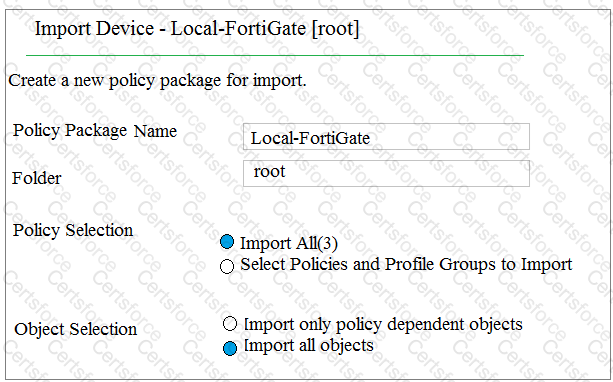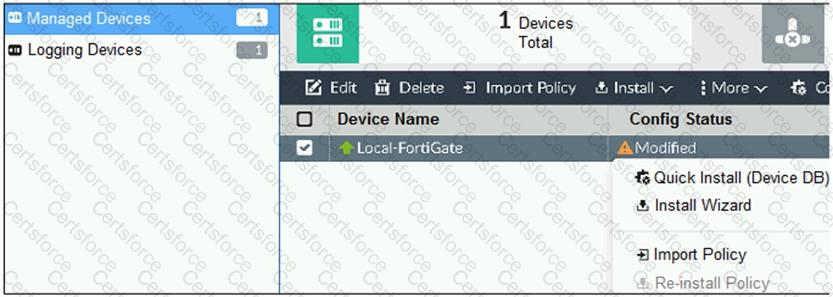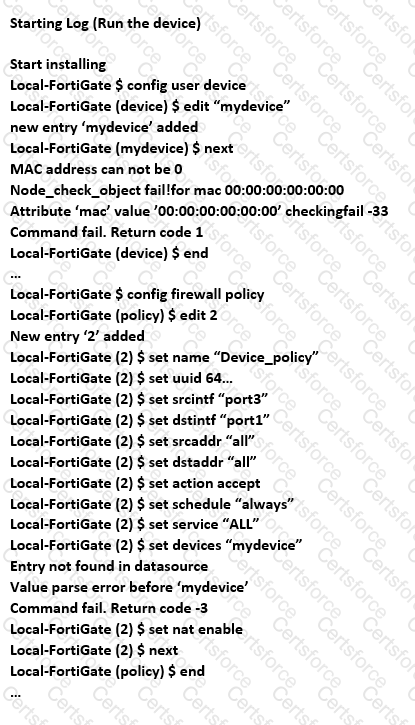View the following exhibit.

An administrator is importing a new device to FortiManager and has selected the shown options. What will happen if the administrator makes the changes and installs the modified policy package on this managed FortiGate?
Which three settings are the factory default settings on FortiManager? (Choose three.)
Refer to the exhibit.

You are using the Quick Install option to install configuration changes on the managed FortiGate.
Which two statements correctly describe the result? (Choose two.)
An administrator wants to delete an address object that is currently referenced in a firewall policy.
What can the administrator expect to happen?
In the event that the primary FortiManager fails, which of the following actions must be performed to return the FortiManager HA to a working state?
What are two outcomes of ADOM revisions? (Choose two.)
View the following exhibit.

Which statement is true regarding this failed installation log?
View the following exhibit.

What is the purpose of setting ADOM Mode to Advanced?
Refer to the exhibit.

Which two statements about the output are true? (Choose two.)
When an installation is performed from FortiManager, what is the recovery logic used between FortiManager and FortiGate for an FGFM tunnel?